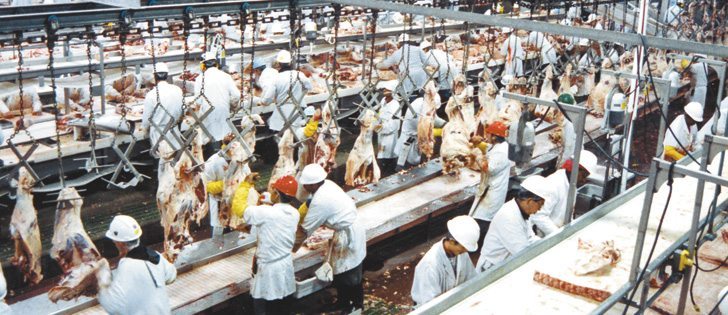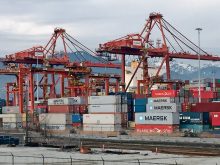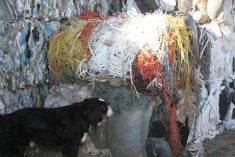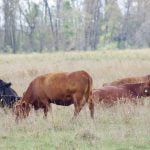KABUL, Afghanistan (Reuters) – Interrupted by the occasional whirring of military helicopters overhead, the U.S. agriculture secretary sat outside a fruit juice export plant in Kabul, sipping pomegranate juice.
Tom Vilsack was meeting with farmers as part of a three-day visit to Afghanistan, which ended Jan. 12.
The United States has made agriculture the biggest non-security priority in the country, but the farmers who Vilsack met with complained of lack of credit facilities, something Vilsack is looking into, and problems in the entire farming chain, from acquiring seeds to a lack of refrigeration and getting goods to market during a war.
Read Also

Regulatory model “broken” in Canada – says BASF
Taking a decade to assess the safety of glufosinate-ammonium, a herbicide branded as Liberty that has been used by farmers for years, embodies what’s wrong with Canada’s regulatory system, BASF said.
“We hear of pledges of funding but we have not seen anything yet,” said Hajji Ghulam Dastageen, an apple and apricot farmer from Paktia province.
“We are looking forward to getting assistance from the international community and from the (agriculture) ministry,” he said via a translator.
Vilsack, who pointed to the U.S.-funded juice factory behind him as proof of U.S. commitment, later announced an additional $20 million US in aid to help improve how Afghanistan’s agriculture ministry delivers services to farmers.
“After decades of conflict, Afghanistan lacks many of the personnel and knowledge resources needed to deliver much-needed services to its people, more than 80 percent of whom rely on agriculture for wages and sustenance,” he said.
Last year, the U.S. spent $300 million on agriculture projects in Afghanistan.
Spending is projected to be more than $400 million this year. Vilsack also promised to send more U.S. agricultural advisers.
The hope is that funds spent bolstering Afghanistan’s agriculture ministry will improve delivery of services to the country’s farmers and thus boost confidence in the central government and draw support away from the Taliban.
Vilsack, who owns a farm, peppered Afghan growers with questions about how they obtain their water and what they need in terms of credit facilities and packaging to protect goods bruised en route to market.
The U.S. and other allies are looking at a range of credit options for farmers in the hope they can wean many from growing opium poppy, which fuels the Taliban insurgency.
The goal is to provide up-front funds for wheat as well as higher-value products such as table grapes, nuts and apples in the hope they will receive better returns than opium. Afghanistan produces nearly all of the world’s opium, which is used to make heroin.
“We are looking forward to receiving loans … we also want low interest,” said Haji Yaseen, another apple grower from Paktia province.
“Farmers everywhere want that,” laughed Vilsack, a former governor of Iowa.
U.S. president Barack Obama’s administration has promised to present a list of credit options to the Afghan agriculture ministry by March.
The plan is to offer credit facilities like those given to U.S. farmers in the U.S., who receive low-interest loans.
“How do you pay for your imports? Would you use a banking system?” Vilsack asked the farmers, who all nodded.
When Obama announced his strategy to send 30,000 more troops to Afghanistan, he also promised a civilian surge, including additional agricultural advisers to overhaul an industry devastated by decades of war.
“President Obama … understands that the future of your country is on this table,” said Vilsack, pointing to a table laden with nuts, apples and pomegranates, many of which he sampled.
“I look forward to going back to Washington with your messages and to give as much help as we possibly can…. I can assure you that I’m going to be a consumer of pomegranates from now on.”
All about Afghanistan
- Afghanistan is a landlocked country in Central Asia and shares borders with Iran, Pakistan, China, Tajikistan, Uzbekistan and Turkmenistan.
- Hamid Karzai has led the country since 2001, when U.S.-backed Afghan forces ended the five-year rule of the austere Islamist Taliban movement.
- Afghanistan’s population is almost 30 million. Life expectancy for men and women is 45 years.
- The main ethnic groups are Pashtun, 42 percent; Tajik, 27 percent; and Hazaras and Uzbeks each account for nine percent.
- The national languages are Pashto and Dari. Pashto, the language of the Pashtuns, is spoken in many parts of the south and east. Dari, a Persian language, is spoken mainly in the north and centre.
- 28 percent of Afghans are literate.
Security
- Violence has escalated as tens of thousands of additional foreign troops, mainly Americans, have been deployed in response to an escalating Taliban insurgency, which claimed record numbers of military and civilian lives last year.
- More than 1,542 foreign troops have been killed in Afghanistan since the war started in November 2001.
- About 800 civilians were killed between January and May of 2009, a 24 percent increase from the same period a year earlier, according to United Nations figures.
International forces
- There are about 110,000 foreign troops from 42 countries working under the NATO-led International Security Assistance Force (ISAF), established in December 2001.
- The U.S. has by far the most troops, with 68,000, most of whom arrived last year. About half work under the ISAF mandate and the rest under the Pentagon’s Operation Enduring Freedom, which also has a mandate to support ISAF.
- Britain, with 9,000 troops, is the second largest ISAF contributor and deployed another 500 troops last month. Germany is next with 4,300 soldiers and France with 3,000. Canada has sent 2,500.
Economy
- According to the UN’s human development rankings for 2009, Afghanistan is ranked 181 out of 182 countries.
- Devastated by 30 years of conflict, Afghanistan’s economy is dependent on foreign aid. In 2007, about $288 million of direct foreign investment flowed into Afghanistan, according to the World Bank.
- Analysts say Afghanistan’s economic growth has also been stunted by high levels of corruption, which prevents aid from reaching ordinary Afghans.
Drugs
- Afghanistan produces 92 percent of the world’s opium, a thick paste from poppies used to make heroin, according to the latest UN Office on Drugs and Crime report.
- Opium cultivation in Afghanistan is directly linked to the Taliban insurgency. Since 2005, the Taliban have earned up to $160 million a year from taxing cultivation and trade of the crop.














